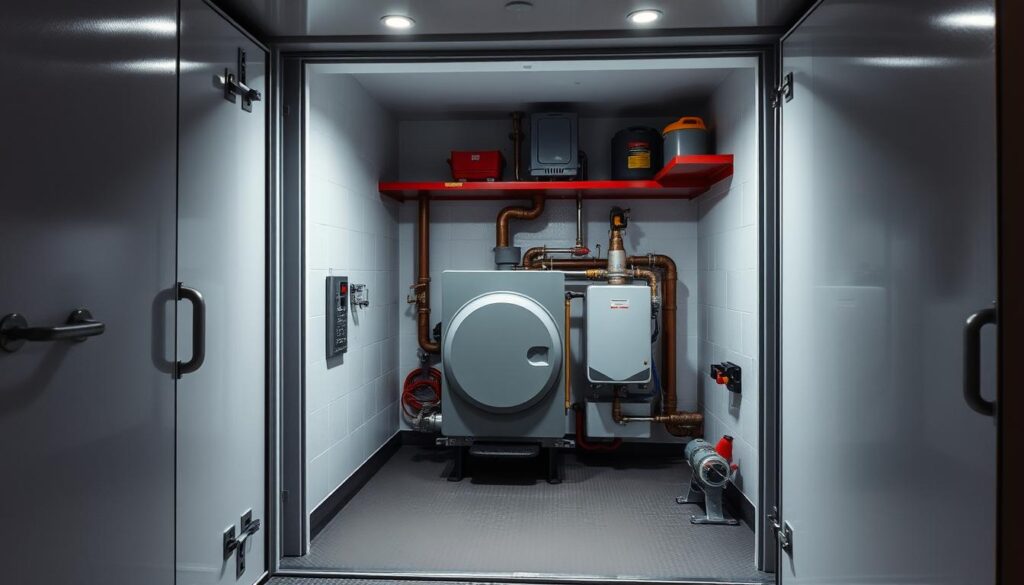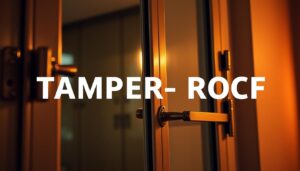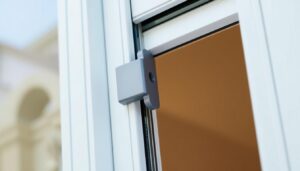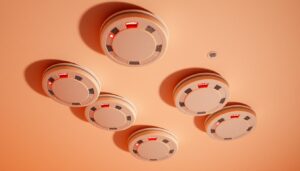Are you aware of the potential fire risks associated with your boiler installation? In many UK homes, cupboard enclosures are used to house boilers, enhancing the aesthetic appeal and maximising space. However, this practice necessitates careful consideration of safety measures to mitigate fire hazards.
Ensuring your boiler cupboard is properly fireproofed is crucial for protecting your home and family. This comprehensive guide will walk you through the essential steps to achieve this, focusing on materials and techniques that create an effective fire barrier around your heating system.
Key Takeaways
- Understand the importance of fireproofing your boiler enclosure.
- Learn about common fire risks associated with boiler installations.
- Discover the materials and techniques for creating a fire barrier.
- Find out how to ensure compliance with UK safety regulations.
- Transform your boiler cupboard into a safer installation.
Understanding Boiler Cupboard Safety
Fire safety in the home begins with understanding the risks associated with boiler cupboards. Your boiler cupboard is a critical area that requires careful consideration to prevent potential fire risks. Ensuring this space is properly maintained and protected can significantly reduce the risk of a fire occurring.
Why Fireproofing Your Boiler Cupboard Matters
Fireproofing your boiler cupboard is not just a recommendation; it’s an essential step in safeguarding your home and family. The heat generated by your boiler can ignite nearby flammable materials, such as aerosols or cleaning products, leading to a potentially catastrophic fire. By fireproofing this area, you can significantly reduce the risk of such incidents. Moreover, proper fireproofing measures can also mitigate the risk of carbon monoxide emissions, which are undetectable and can be life-threatening.
Common Fire Risks in Boiler Installations
Boiler installations pose unique fire risks, primarily due to the potential for fuel leaks, electrical faults, and overheating issues. These risks can be exacerbated by poor maintenance or the storage of flammable materials nearby. It’s crucial to be aware of these risks and take proactive steps to mitigate them, such as regular maintenance checks and ensuring that the boiler cupboard is clear of any hazardous materials. By doing so, you can significantly enhance the safety of your home and reduce the risk of damage caused by a boiler-related fire.
Assessing Your Current Boiler Cupboard Setup
Evaluating your boiler cupboard’s current setup is essential for identifying potential fire hazards. A cluttered or poorly maintained boiler cupboard can pose significant risks, including difficult access for maintenance and potential fire hazards due to nearby flammable materials.
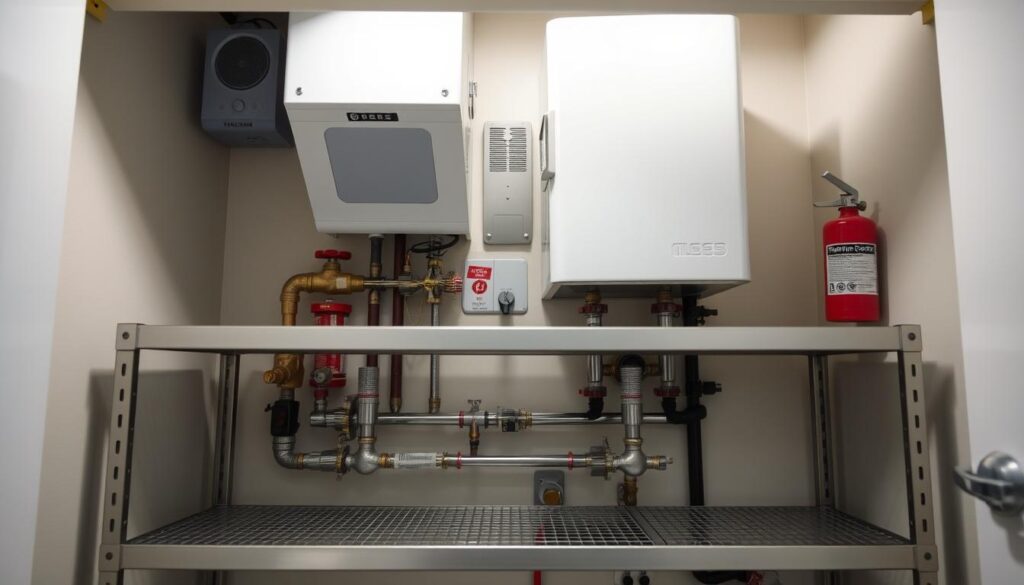
Identifying Potential Hazards
To identify potential hazards, you should first inspect the materials used in the construction of your boiler cupboard. Check if they are combustible or if they provide adequate fire resistance. Look for signs of scorching, overheating, or previous modifications that might compromise safety. It’s also crucial to check for proper clearances around the boiler and ensure that the cupboard is well-ventilated.
- Check the materials used in the cupboard’s construction.
- Inspect for signs of overheating or scorching.
- Verify that the boiler has sufficient clearance.
Conducting a Basic Safety Audit
Conducting a basic safety audit involves a systematic check of your boiler installation. Ensure that your boiler cupboard is not overcrowded, as this can lead to access issues and neglect of necessary maintenance. Check that all vents are unobstructed and that there are no signs of leaks or corrosion on the boiler or its connections. Documenting your findings will help in planning any necessary fireproofing improvements.
- Check for overcrowding and ensure easy access.
- Verify that vents are clear and unobstructed.
- Inspect for signs of leaks or corrosion.
Essential Clearance Requirements
To ensure your boiler operates effectively and safely, adequate clearance is essential. Proper clearance is not just about having enough space around your boiler; it’s crucial for safety, efficiency, and the longevity of your heating system.
Manufacturer Guidelines for Spacing
The first step in determining the correct clearance for your boiler is to consult the manufacturer’s instructions. Different boiler models have varying clearance requirements, mainly for access and maintenance purposes. The installation manual will provide specific guidance on the minimum clearances needed.
For most modern combi boilers, it’s advised to leave at least 300mm of clearance above the unit and 100mm below it. Additionally, ensuring 700mm of clearance at the front of the boiler is recommended for easy service and maintenance access.
Minimum Clearances Around Your Boiler
Maintaining the correct clearance around your boiler is vital for several reasons. Firstly, it prevents overheating by allowing adequate air circulation. Secondly, it ensures that you or a technician can access the boiler easily for maintenance or repairs.
| Clearance Area | Recommended Minimum Clearance |
|---|---|
| Above Boiler | 300mm |
| Below Boiler | 100mm |
| Front of Boiler | 700mm |
By following these guidelines, you can ensure your boiler operates within a safe environment, enhancing both its efficiency and lifespan.
Choosing Fire-Resistant Materials for Fireproofing a Boiler Cupboard

Selecting the right fire-resistant materials is a critical step in ensuring your boiler cupboard is safe and secure. When it comes to fireproofing, the materials you choose play a crucial role in preventing the spread of fire and minimizing potential damage.
Fire-Rated Plasterboard Options
Fire-rated plasterboard is a popular choice for lining boiler cupboards due to its ability to resist fire. There are various types of fire-rated plasterboard available, each with its own fire resistance rating. For instance, Type F plasterboard is designed to provide a higher level of fire resistance compared to standard plasterboard. When selecting fire-rated plasterboard, it’s essential to consider the installation requirements and cost considerations to ensure compliance with safety regulations.
Acoustic plasterboard, which is a high-density material, not only provides fire resistance but also acts as a great noise insulator. Although it is thicker than regular plasterboards, its additional benefits make it a worthwhile consideration for boiler cupboard installations.
Insulation Materials with Fire-Retardant Properties
Insulation materials with fire-retardant properties are another crucial component in fireproofing your boiler cupboard. Fiberglass, for example, is a tried-and-true method of insulation for both heat and sound. It can be fitted around the edges of your boiler cupboard as a means of soundproofing and thermal insulation. When choosing insulation materials, it’s vital to look for products with fire-retardant properties to ensure they contribute to the overall fire safety of your boiler installation.
By combining fire-rated plasterboard with insulation materials that have fire-retardant properties, you can create a comprehensive fireproofing solution tailored to your specific boiler installation. This not only enhances safety but also provides additional benefits such as improved thermal efficiency and reduced noise levels.
Step-by-Step Guide to Fireproofing Your Boiler Cupboard
To protect your home from potential fires, it’s essential to fireproof your boiler cupboard properly. This comprehensive guide will walk you through the process, ensuring your boiler cupboard is safe and compliant with safety standards.
Preparing the Cupboard Space
Before you begin the fireproofing process, you need to prepare the cupboard space. Start by removing any existing materials, such as old shelving or lining, and thoroughly clean the area. This will provide a clean slate for your fireproofing work. Ensure the space is clear of any debris or flammable materials.
Installing Fire-Resistant Lining
When installing fire-resistant lining, it’s crucial to measure the cupboard accurately to ensure a precise fit. Cut the lining material according to your measurements, and then secure it in place using appropriate fixings. Fire-rated plasterboard is an excellent choice for lining, as it provides excellent fire resistance. Make sure to cover all surfaces, including the door and any gaps around the boiler installation.
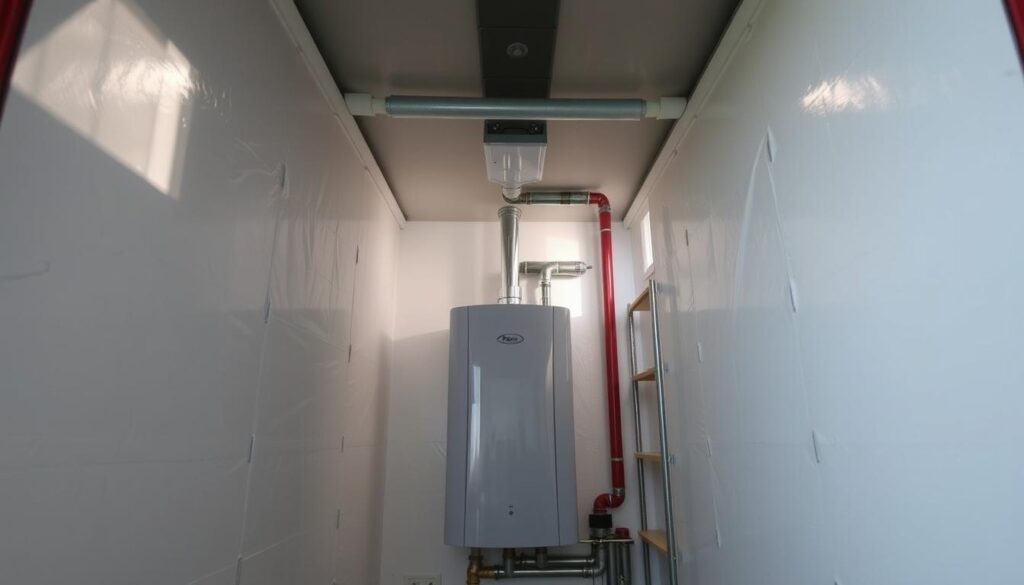
Sealing Gaps and Potential Air Leaks
Sealing gaps and potential air leaks is a critical step in fireproofing your boiler cupboard. Use fire-resistant sealants to fill any gaps around the boiler, pipes, and door. This will prevent air from feeding any potential fire and reduce the risk of flames spreading. Additionally, consider adding acoustic insulation to stud walls to enhance soundproofing and further improve safety.
| Fireproofing Measure | Benefit |
|---|---|
| Fire-resistant lining | Prevents fire spread |
| Sealing gaps and air leaks | Reduces fire risk |
| Acoustic insulation | Enhances soundproofing |
By following these steps, you can ensure your boiler cupboard is properly fireproofed, providing a safer environment for your home’s heating system to operate. Regularly inspect your work and maintain the fireproofing measures to ensure ongoing safety.
Proper Ventilation: A Critical Safety Component
Ventilation plays a critical role in maintaining the safety and efficiency of your boiler installation. Ensuring that your boiler cupboard is well-ventilated is not just a matter of following regulations; it’s essential for preventing dangerous build-ups of gases and reducing the risk of fires.
Ventilation Requirements for Modern Boilers
Most modern boilers, especially combi boilers, do not require additional ventilation if installed in a cupboard with sufficient clearance. However, it’s crucial to consult the manufacturer’s instructions to confirm specific ventilation requirements. Different types of boilers, such as system and conventional models, may have varying needs.
- Check the manufacturer’s guidelines for specific ventilation requirements.
- Ensure adequate clearance around the boiler for air circulation.
- Consider the type of boiler and its specific ventilation needs.
Installing Adequate Airflow Solutions
To ensure proper ventilation, you may need to install airflow solutions. This can range from simple vents to more complex ducting systems, depending on your boiler’s requirements and the cupboard’s design. The key is to balance the need for ventilation with maintaining the integrity of your fireproofing measures.
By understanding and implementing the correct ventilation strategies, you can significantly enhance the safety and efficiency of your boiler operation.
What NOT to Store in Your Boiler Cupboard
To avoid potential hazards, it’s essential to know what items should be kept out of your boiler cupboard. The storage of flammable materials such as aerosols, cleaning products, and paint cans near the boiler poses a serious fire hazard. The heat emitted from the boiler could potentially lead to these items igniting.
Flammable Materials to Keep Away
Treating a boiler cupboard as a general storage area is a no-no, as it enhances the chances of items falling onto or damaging the boiler. You should primarily look to keep the space dedicated to the boiler and minimise the amount of related items stored within to decrease the risk of potential damage occurring. Common household items that are surprisingly flammable include:
- Aerosols and spray cans
- Cleaning products containing harsh chemicals
- Paint cans and thinners
Safe Alternatives for Household Storage
Instead of storing hazardous materials in your boiler cupboard, consider alternative storage solutions that maintain both convenience and safety. You can organise your home storage by:
- Designating a specific area for cleaning supplies and chemicals, away from heat sources.
- Using storage bins or shelves that are secure and out of reach of children.
- Labelling storage containers clearly to avoid confusion.
By being mindful of what you store in your boiler cupboard and opting for safe storage alternatives, you can significantly reduce the risk of fire hazards and ensure a safer home environment.
Installing Safety Devices and Monitoring Systems
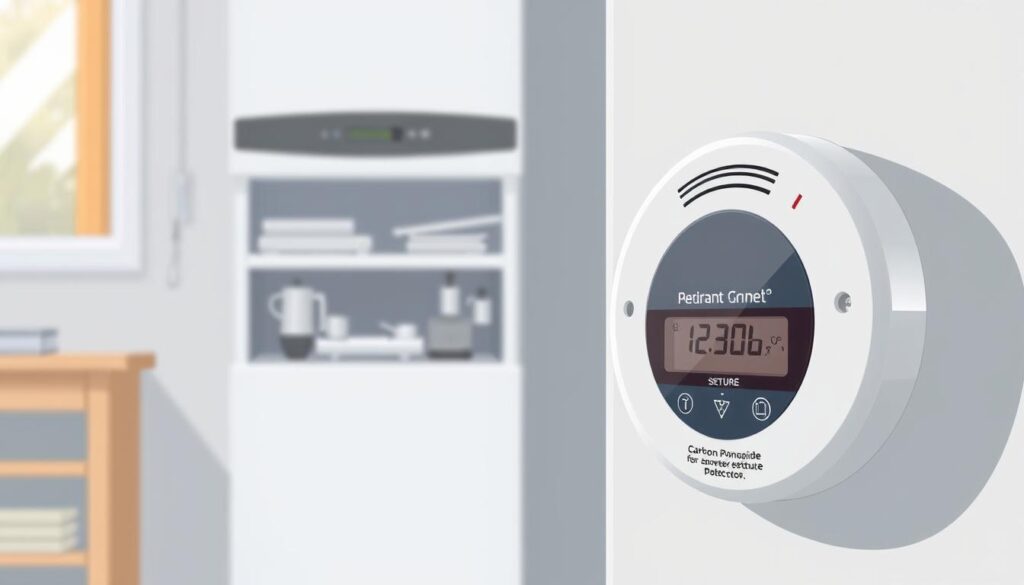
To ensure your home remains safe, installing safety devices near your boiler cupboard is crucial. A key safety measure is the installation of a carbon monoxide detector, which can alert you to dangerous levels of this odourless gas.
Carbon Monoxide Detectors: Placement and Maintenance
Carbon monoxide detectors should be placed on the same level as the boiler cupboard and ideally within 1-3 metres of the cupboard. It’s essential to follow the manufacturer’s instructions for installation and to test the device regularly to ensure it’s working correctly.
Fire Alarms and Heat Sensors
In addition to carbon monoxide detectors, installing fire alarms or heat sensors near the boiler cupboard can provide early warning in case of a fire. These devices should be interconnected so that when one sounds, they all sound, ensuring you’re alerted no matter where you are in your home.
When choosing safety devices, consider the specific risks associated with your boiler installation. For instance, if you have a gas boiler, ensuring that your carbon monoxide detector is specifically designed to detect gas leaks is vital. Regular maintenance of these devices is also crucial; this includes testing them weekly and replacing batteries as recommended by the manufacturer.
By integrating these safety measures, you can significantly reduce the risk associated with your boiler cupboard, creating a safer environment for your family.
Maintaining Your Fireproofed Boiler Cupboard
Fireproofing your boiler cupboard is not a one-time task; it requires regular checks and maintenance. To ensure your boiler operates safely and efficiently, you must commit to ongoing maintenance.
Regular Safety Checks and Inspections
Conducting regular safety checks is vital to maintaining your fireproofed boiler cupboard. You should inspect the cupboard at least once every six months, looking for signs of wear, damage, or potential fire hazards. Check the condition of the fire-resistant materials, ensure that there are no leaks or damage to the boiler, and verify that all safety devices are functioning correctly. A boiler service should be performed annually by a qualified engineer to ensure the boiler is running safely and efficiently.
- Inspect fire-resistant materials for damage or wear.
- Check for leaks or damage to the boiler.
- Verify that all safety devices are functioning correctly.
When to Call a Professional
While regular checks can help identify potential issues, there are times when you need to call a professional. If you notice any signs of damage, leaks, or malfunctioning safety devices, you should contact a Gas Safe registered engineer immediately. They can assess the situation and perform any necessary repairs or maintenance. Remember, a faulty boiler can pose serious safety risks, including carbon monoxide poisoning.
To maintain your fireproofed boiler cupboard effectively, it’s essential to use qualified professionals for any work on your boiler system. Always verify the credentials of any engineer before allowing them to work on your boiler.
Conclusion
Ultimately, prioritising the fireproofing of your boiler cupboard is a proactive measure that safeguards your home and family. By following the guidelines outlined in this article, you can significantly reduce the risk of fire-related incidents. Ensuring safety and efficiency in your boiler installation is crucial. This not only protects your property but also guarantees optimal boiler performance. To maintain a gas safe environment, regular checks are necessary. Make safety your top priority for a more comfortable and energy-efficient home.
